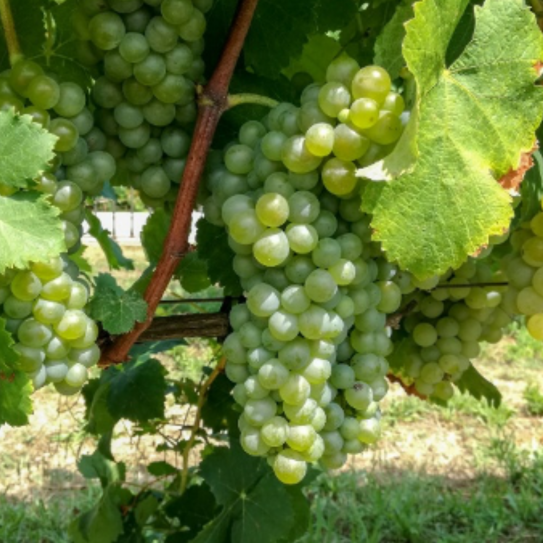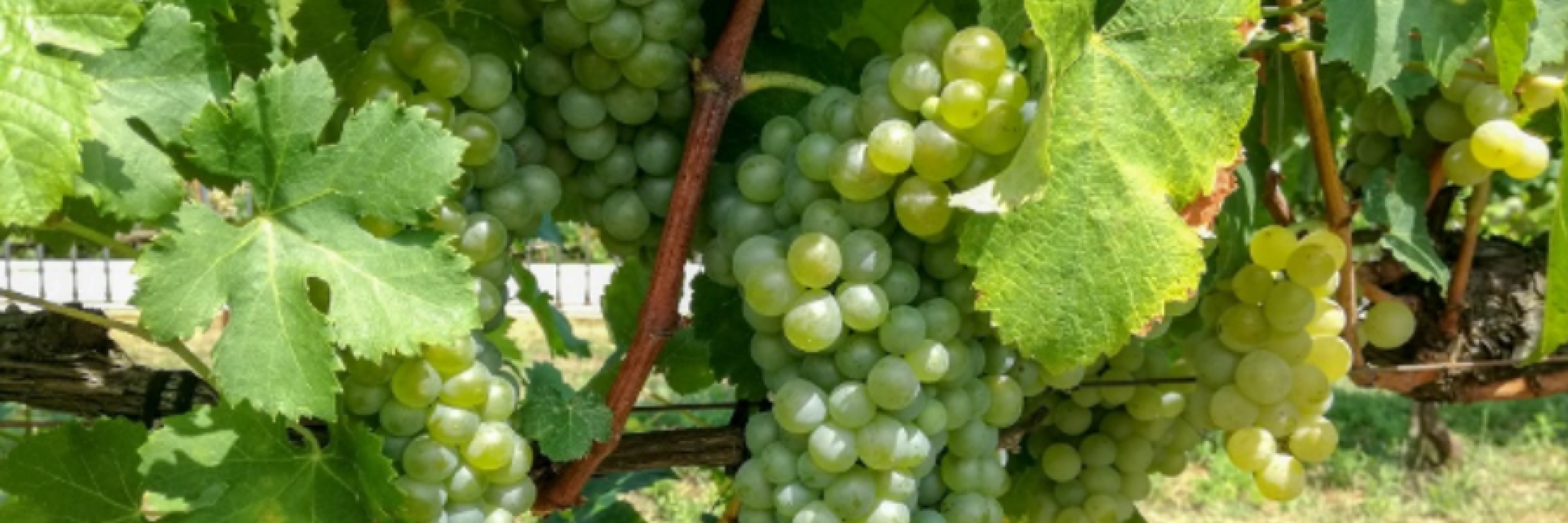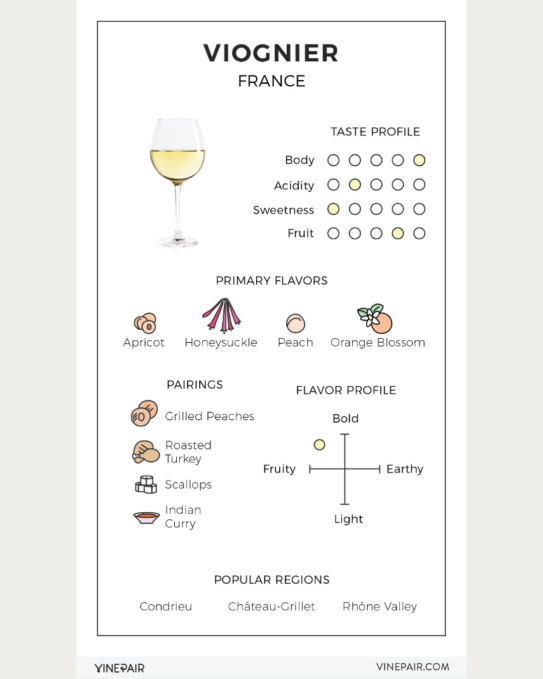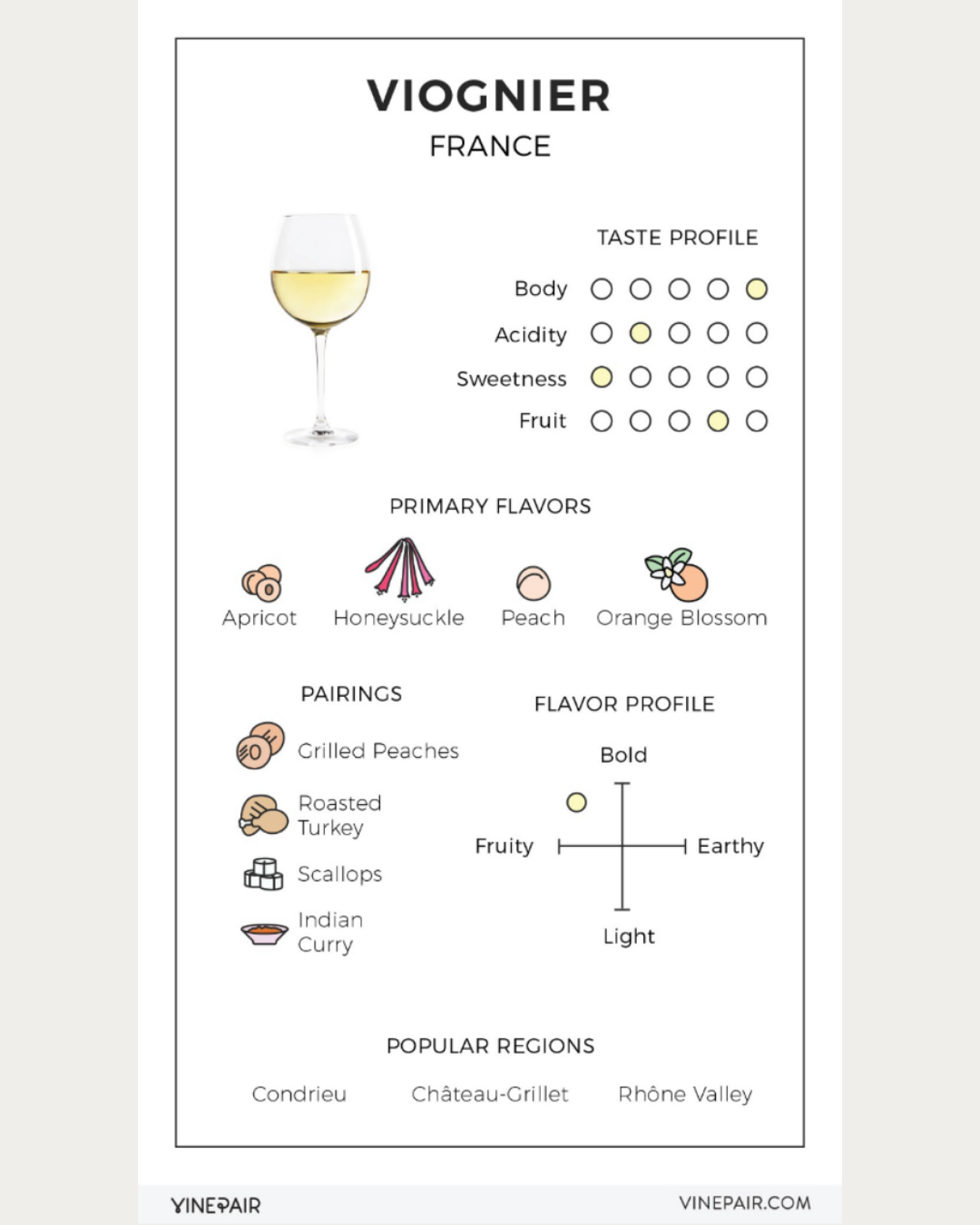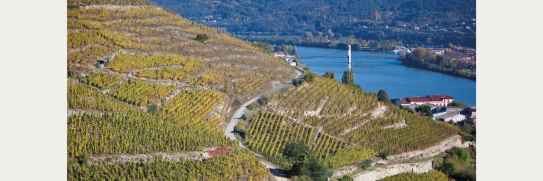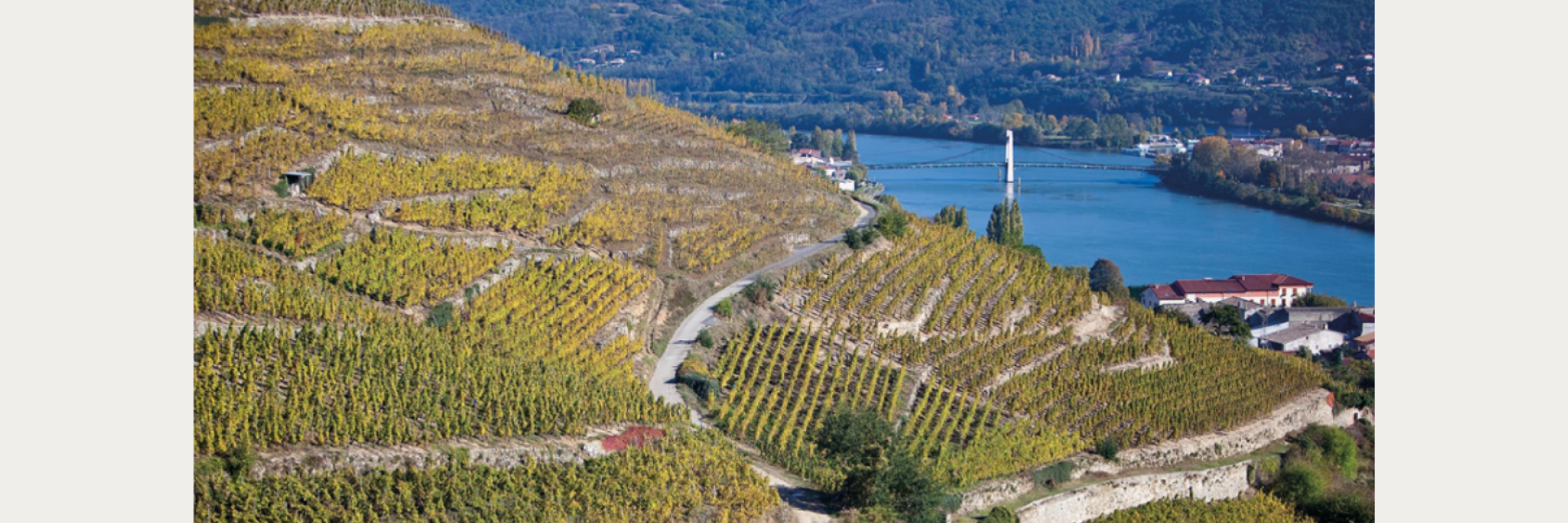Firstly, very best wishes for a healthy and successful 2025.
Viognier is today one of the more fashionable and sort after grape varieties - with both growers and consumers – and plantings are growing rapidly in the New World as well as in France – especially in the South. But Viognier is also a grape which has literally “come back from the dead”, for not that long ago just a few pockets of vineyards existed.
As ever, I will highlight some top examples from the Peter Graham portfolio.
PETER GRAHAM WINES VIOGNIER SELECTION
When Jancis Robinson mw wrote her seminal book on the grape varieties of the world – Vines, Grapes & Wine – she noted then, that in 1986, Viognier was recorded as only being planted in around 32 hectares in the whole world. In effect it was close to viticultural and commercial extinction. Even in its spiritual home – Condrieu in the North Rhône – only 23ha (out of a possible 202 ha) were planted. Importantly and perceptively she still classified the variety as “Major” in her book – a reflection of both its intrinsic quality and potential.
Nearly 40 years later plantings in Condrieu are standing at near full capacity and the variety has also become widely planted in the South of France as mentioned. Interest in the variety has spread well into the New World – especially in the USA, Chile, South Africa, and Australia, where producers such as Yalumba (in the Barossa) in particular, became true champions of the grape.
And this is indeed good news, because good quality, well made Viognier is one of the most hedonistic white wines in the world – powerful, rich, and seductive - giving immediate and voluminous pleasure for the drinker. If you are either a Chardonnay or Albariño lover, for example, you should also enjoy Viognier – both for its power and/or stone fruit and citric flavours.
So, what makes a typical and good Viognier …
Typical smells and flavours associated with Viognier – it is very much a Rhône variety (North and South) but increasingly popular in the New World
It needs to be picked late and ripe to elevate both its aromatic and flavour profiles (hence why its acidity is therefore relatively moderate). However, it must not be grown in too hot a climate as this leads to too much sugar and even flatter acidity. The wine then becomes “hot”, alcoholic, and flabby. But caught exactly right, it packs a punch with its bold perfume and flavours of apricots, peaches, honeysuckle, and musk. The only other commercial aspect is it tends to be a naturally low yielding variety, so crop returns can be relatively meagre.
The grape is believed to have arrived in the Rhône via the Romans, but its origins are obscure although The University of Davis (California) believes its DNA is quite close to Italian varieties Freisa and Nebbiolo – others allude to a close link to Syrah. Because of its weight and power, it also makes for a useful component in blends – ironically both with other white varieties but also one black in particular – Syrah! This is a regular practice in the famous North Rhône appellation of Côte-Rôtie – please see below.
Its spiritual home is Condrieu in the north Rhône, planted on steep hillsides of decomposed granite soils, which the variety loves. This appellation only makes white wine and solely from Viognier – so an anomaly in what is mainly a red winemaking region.
And, with another neat twist, it makes an appearance in its next-door neighbour - the Côte-Rôtie appellation. Here it can be co-fermented with the black grape Syrah (up to 20% by law, though in reality around 5% is used these days) to assist in both the aromatic and fruit profile of the red wine but also – some producers say – in the fixing (stabilising) of colour with reference to bottle aging. Many New World producers are also copying this process in their own Syrah/Shiraz blends.
Condrieu, North Rhône – Viognier’s spiritual home
Plantings have also taken off in the Southern Rhône where it is often used in blends but can also be a stand-alone single varietal offering – and they are often very good and not at the prices either of Condrieu.
Rhône guru Michel Chapoutier makes an excellent example from the larger Collines Rhodaniennes region with the La Combe Pilate Viognier - precise apricot fruit and a touch of bergamot. Nice exotic edge to the wine with plenty of texture.
https://petergrahamwines.com/p/19-chapoutier-la-combe-pilate-viognier
In addition, because of its power, the use of Viognier in white blends is also important as it adds real punch and weight, which can also be cost effective when blended with larger cropping varietals.
Producers in other areas of France look to plant Viognier on granite soil, if possible, too. This is most prevalent in the broader Rhône, Southern Rhône, and South of France areas. Some impressive examples are emerging these days from both the generic Côtes-du-Rhône, Languedoc and Pays d’Oc areas.
A good example of this with Peter Graham is Astruc from the Pays d’Oc. Unoaked, again with this lovely combination of stone fruit and soft spice and a little lighter in body.
https://petergrahamwines.com/p/20-viognier-astruc
New World – Highlights
USA
In the 1980s and 90s a movement evolved called “The Rhône Rangers” (very much Californian led) which naturally included Viognier in its portfolio. Again, using the Condrieu (Rhône) role model producers sort out sites and practices to mimic this classic region. Producers in the Napa set an early high standard and others used it widely in their Shiraz/Syrah red blends. Today well over 800 ha (and growing) are planted in California with Viognier.
A good example of this is The Cline Cellars North Coast Californian Viognier. This is a Sonoma based winery, and their Viognier has ripe stone fruit notes with just a lick of oak – plenty of body put also freshness and texture.
https://petergrahamwines.com/p/20-viognier-north-coast-cline-cellars
South Africa
In the last 30 years a bastion of development – this country holds Chenin Blanc most dear as its No. 1 white grape but have found that Viognier also complements that grape well in blends as well as stand-alone examples. And again, they often use a judicious amount of Viognier in their Shiraz/Syrah red wine blends. Viognier works better away from the cooler coastal wine regions – inland in areas such as Stellenbosch and Paarl for example.
Chile
Chile is catching up fast and plantings of Viognier are accelerating – and across several regions. This country has tremendous potential for this variety. A brilliant example of this is the Tabalí “Pedrogoso” Gran Reserva Viognierfrom the emerging Limari Valley to the north of the main Central Valley region of Chile. Again, a very pure stone fruit led example with no oak and lovely floral lift on the bouquet.
https://petergrahamwines.com/p/19-viognier-tabali
Australia
As mentioned, Yalumba (a Barossa based producer) pride themselves as the best and most focused producer of Viognier – as a straight varietal – led by their Eden Valley special cuvée, the barrel fermented “The Virgilius” which can rightly claim to be Australia’s finest example and rival others in the New World. It was interesting that Yalumba saw potential as long ago as 1980 when they first planted Viognier in Eden Valley (not unlike Calera who first planted in 1983 in Mount Harlan, California). These were quite serious initiatives when you think how little was grown in the Rhône at the time, and how obscure that grape would have been commercially to both the wine trade and drinker.
Logic would also dictate that a country already besotted with that other great Rhône varietal – Syrah (Shiraz) - would embrace other Rhône varietals with open arms. The Yalumba Organic Gen Viognier is a classic example – wild yeast ferment it has bright stone fruits, with lovely spicy notes and a creamy mouthfeel.
https://petergrahamwines.com/p/organic-viognier-gen-yalumba
Food Matching
Viognier deserves a place on any modern-day wine list – as a variety and drink it best consumed young – by that 2-5 years after it is made. It works particularly well with white meats (especially pork), fish, and vegetable based spicier food, including milder curries and Thai dishes (vegetable, fish, and chicken). It also works surprisingly well with grilled or steamed asparagus, with or without a butter sauce as a starter.

